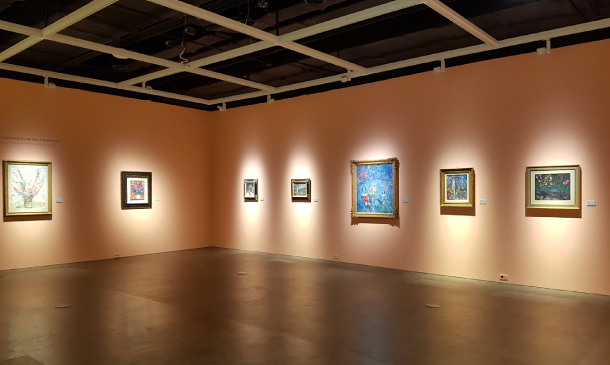Inside the fantastic world of Marc Chagall

“Big Red Bouquet” (1975) a pastel and watercolor on paper, is being displayed in Korea for the first time. [YOON SO-YEON]
“When we hear the name Chagall, we think of his colors because he’s a painter of vibrant colors and bright lights,” said curator Dolores Duran Ucar. “In this exhibition, we discover the personal universe created by Chagall, a fantastic world where everything is possible, and a world where memories of his youth ignite the sense of color with the forms of avant-garde.”
The exhibition presents works from various times in Chagall’s life, such as his early career in the 1920s, his traumatic escape from Europe during WWII and his later years in the United States. Across four sections of the exhibition - titled “Dreams, Fables and Religion,” “War and Exodus,” “The Path of Poetry” and “Love” - visitors see works depicting different subjects and created with a variety of mediums, but will notice that love remains a consistent theme throughout all of his work.

The final section of “Marc Chagall Special Exhibition - Chagall’s Garden” is a collection of the artist’s work centered around the theme of love. [YOON SO-YEON]
“This exhibition is unique in the sense of both quantity and quality of the works that are presented. It allows a double approach. Art historians can deeply investigate Chagall’s universe, through important artworks and the themes of the paintings. On the other hand, in addition to the scientific mission, we can approach and feel his sensual forms of dreams, colors of love and life,” said Duran Ucar.
Some attractions that shouldn’t be missed include 20 books containing Chagall’s illustrations in a separate section called “Chagall’s Library” and “Chagall’s Atelier” where visitors can get the chance to create their very own prints in a studio that’s been made to look like the one in which Chagall produced his work.
“Chagall painted everyday until the last day of his life, for over 80 years,” said Kang Pil-woong, director of the M Contemporary art center. “We would like the visitors to look at his works and understand his artistic world, but also to take some time to look inside themselves, as if they’re walking through a garden.”
BY YOON SO-YEON [yoon.soyeon@joongang.co.kr]










with the Korea JoongAng Daily
To write comments, please log in to one of the accounts.
Standards Board Policy (0/250자)